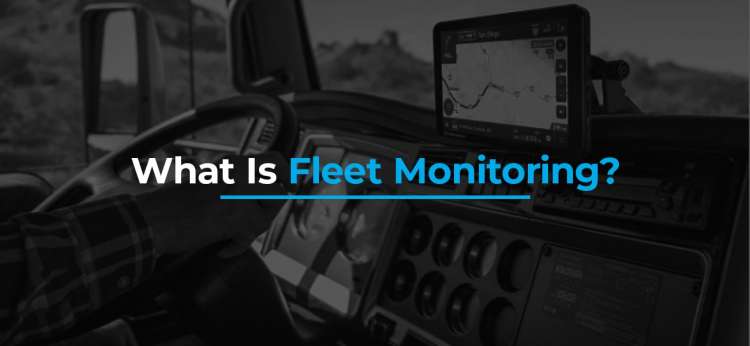Building a Resilient Fleet
If you're a fleet manager, you know countless factors affect your fleet's readiness. You can prepare for disruptions and changes by building a resilient fleet. To improve your fleet's readiness, learn more about fleet resilience best practices.
What is Fleet Resilience?
Fleet resilience is a concept very similar to business or personal resilience. It describes how well your fleet can adapt and overcome challenging and stressful situations and continue to operate effectively despite these occurrences. This trait is essential for fleets. For example, look at how the coronavirus pandemic changed so many facets of our daily lives so dramatically. Building and strengthening resilient fleets can make it easier for you to overcome any challenge thrown at you.
Benefits for Fleets
Employing a risk-informed fleet resilience strategy has several significant benefits that you should consider. The most significant advantage is that your fleet will have improved efficiency in recognizing, reacting to, and predicting shifting circumstances. Ensuring your fleet has procedures to respond to and overcome changes can allow your team to adapt more quickly and anticipate additional challenges better. Additionally, these procedures improve communication between your fleet crew.
In addition to predicting and adapting to changes, a fleet resilience strategy also improves your future ability to overcome unexpected changes even more efficiently. When you have procedures in place to handle changes, fleet crews can better focus on making the necessary adjustments when shocks occur rather than wondering what they should be doing. Making these adjustments promptly can improve your fleet's ability to predict, adapt, and overcome future shocks.
A comprehensive fleet resilience strategy can protect your operations from minor disruptions and help you return to full operations quickly after severe disruptions by minimizing damage and increasing resourcefulness. In summary, a fleet resilience strategy enables you to predict, adapt, and overcome changes efficiently. Continually revising your resilience strategy will further improve your efficiency. Improving fleet resilience can also help you stay a step ahead of your competition.
Fleet Hazards, Threats, and Vulnerabilities

One of the biggest threats to fleets today is the ongoing coronavirus pandemic. We still don't know the full extent of how COVID-19 will impact our lives, meaning that fleet resilience is more important now than ever.
Other hazards, threats, and vulnerabilities you'll need to prepare your fleet for include the following:
- Fires
- Flooding
- High winds
- Fuel shortages
- Downed bridges
- Natural disasters
- Physical impasses
- Industrial accidents
- Changes in mission and responsibilities
Having a fleet resilience plan in place will prepare you to weather any of these occurrences and be much more efficient in handling more common disruptions.
Resilience in Fleet Management
Proper fleet management helps you be more resilient. As you create your fleet resilience plan, consider these areas:
Increase Operations Flexibility
One of the best ways to build a resilient fleet is by increasing operations flexibility. Ensuring the various parts of your fleet can react quickly and effectively to changes is critical to the overall success of your plan. To do this, you'll want to consider things such as:
- The complexity of your organization
- Who the points of contact are
- The overall financial flexibility of your fleet
Ensure all decision-makers can respond quickly to changes with few obstacles and the financial flexibility to implement adjustments. Streamline the operations and decision-making process as much as possible.
Protect Fleet Assets
Changes and events can damage important assets and continue to cause harm after the initial shock. As a result, it's essential to protect your mission-critical assets, such as fueling stations, vehicles, and infrastructure. This entails creating a resiliency plan for each vital asset that helps you shift to alternatives when disruptions occur. For example, you can reduce the damage from losing access to a specific fuel station if you already have a plan in place to get supplies from other sources. The goal is to ensure your daily operations are impacted as minimally as possible despite threats, vulnerabilities, and risks.
Maintain Your Fleet
After you've planed to increase operations flexibility and protect your critical assets, you need to consider how you maintain your fleet. To adapt to uncertainty effectively, you have to be prepared physically and materially for every plan you have in place, in addition to the unexpected adjustments. This is why analyzing your fleet maintenance is critical. You want to understand your driver behavior, frequent maintenance needs, driving schedules, and more as much as possible. If aggressive driving creates issues with brakes, provide training and workshops to mitigate the problem. You want to have your vehicles, maintenance schedules, and drivers prepared to maintain operations even through drastic changes.
You'll also want to ensure you understand and adapt your replacement strategy for parts and maintenance. Note what issues require frequent maintenance and plan to have enough resources to solve those problems in more significant numbers if you need to use your responsive strategies.
Prepare for and Invest in the Future with Automation and Telematics
The last area you'll want to consider as part of your fleet resilience strategy is the technology you employ and invest in the future. Daily life is becoming more technology-dependent. Your resiliency strategy should reflect this and use technology to improve efficiency and lower costs. Implementing automation and telematics technology can ensure your fleet continues to operate despite even extreme changes. At this point, it would be foolish not to have a plan in place to invest and implement technology for such occurrences.
How Management Software and Fleet Telematics Can Help

Management software and fleet telematics can make planning, implementing, and monitoring your fleet resilience strategy easier and more efficient. These programs will help you collect and analyze data based on driver performance, asset locations, and vehicle metrics like mileage, fuel consumption, and idle time. Create compelling reports to help with data analysis and make the most informed business and risk management decisions possible.
Fleet management and telematics software can enable you to lower your costs and increase your productivity since you won't need to spend as much time doing the calculations and tracking yourself. You'll be able to make crucial decisions quickly and keep your fleet operational despite disruptions.
Rand McNally Fleet offers the most centralized and efficient fleet management and telematics systems you'll find. Our program provides simple, easy-to-read reports and a vast selection of data, so you can analyze and make informed decisions on any area of your fleet you wish. If you're ready to supplement your fleet resiliency plan with a trusted and effective fleet management program, contact us now to request a price.
Contact Rand McNally
Request Pricing for Fleet Solutions
We're looking forward to talking with you. Please fill out the form to get started.
Or call us:
+1 (800) 789-6277 (Fleet management, ELD, Asset tracking, Navigation)
+1 (800) 234-4069 x2 (MileMaker/IntelliRoute)
If you are an existing customer and need assistance, please contact your Client Success rep or email fleetsupport@randmcnally.com.
This form is for business-to-business transactions only. It is not for personal consumer use.


